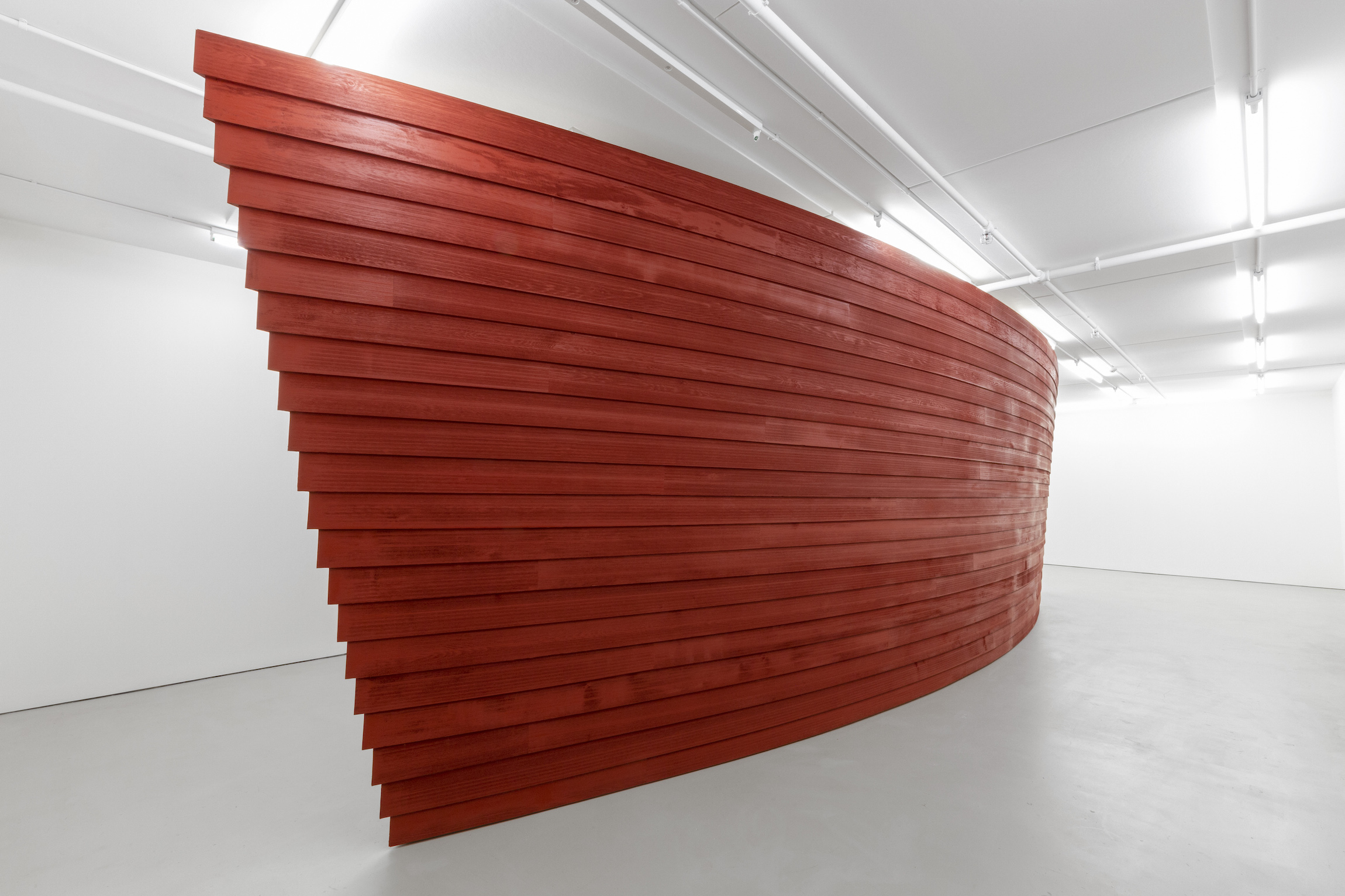Art News New Zealand, Spring 2022. Review of Brett Graham: Ark of Forbearance, Bartley and Company Art, Wellington, 19 May–18 June 2022.
–
In 2020, Brett Graham (Ngāti Koroki Kahukura, Tainui) unveiled an ambitious project at New Plymouth’s Govett-Brewster Art Gallery. Through monumental sculptures and grainy videos, Tai Moana Tai Tangata addressed the history of interaction between Taranaki and Tainui iwi against the background of colonisation and the New Zealand Wars. Years in the making, it filled the Govett and unleashed a tsunami of commentary and acclaim. The show was adapted for City Gallery Wellington in 2021 and heads to Christchurch Art Gallery later this year. The artist was riding high. But what to do next? No pressure.
Ark of Forbearance at Bartley and Company Art was a bold follow up. Graham’s simplified, minimalist boat-hull form dominated Bartley’s second-floor gallery, miraculously occupying the space like a ship in dry dock (out of water) or a ship in a bottle (how did it get there?). It loomed over visitors and impeded their passage through the space, compelling them to circle it like the Kaaba. It divided the room, and separated visitors from one another. Its imposing but sleek form was clad in cedar weatherboards, stained red, suggesting kōkōwai, the ochre traditionally used on Māori carvings. Beingsymmetrical, one couldn’t tell front from back, couldn’t tell which way it was heading. It may have been an ark, a vehicle of salvation, but there was no door—no way in. Visitors were physically excluded.
Graham’s title referred to the nineteenth-century Māori pacifist leader Te Whiti, who advised his people at Parihaka: ‘Forbearance is the sole ark of your safety. As Noah built the ark to carry his people safely through the flood, so let fortitude be the ark to save you.’ It didn’t work out so well at the time. At dawn on 5 November 1881, soldiers invaded the village. They looted and destroyed most of the buildings, Te Whiti and Tohu were arrested and jailed for sixteen months, most villagers were expelled and dispersed throughout Taranaki without food or shelter, and those remaining were issued with government passes to control their movement. Today, Te Whiti’s pacifist stance is lauded. In 2017, the Crown finally issued an apology.
Graham’s Ark was accompanied by a pair of hemispherical timber shields, presented in another space. Incised with grooves converging on a vanishing point, they were visually ambiguous: literally convex, optically concave. The red one was titled Manawanui, te reo Māori for forbearance, tolerance, patience, and restraint; the gold one Aceldama, from the Aramaic, referring to the field the Pharisees acquired with Judas’s bribe for betraying Jesus. Te Whiti predicted that Māoridom would be beset by those accepting bribes to betray their own.
Read through the Te Whiti reference, Ark suggested a righteous memorial to resistance. However, it wasn’t quite so simple. Graham’s wall text also mentioned Covid, rising oceans from climate change, war, terrorism, and, pointedly, the recent anti-vax protests on Parliament grounds, prompting other readings. The issues confronting Noah and Te Whiti were scrambled with other floods (literal and metaphorical) and with those anti-vaxers (Māori among them). Some didn’t want to be in Jacinda Ardern’s ark, her ‘team of five million’, and were building their own.
Graham’s Ark put me in mind of other arks. I thought of the black nationalist Marcus Garvey, who created his shipping company Black Star Line, to enable African-Americans to return to Africa. And I remembered Marshall Applewhite’s Heaven’s Gate cult, whose suicidal adepts assumed they were being beamed up onto ufos—extraterrestrial arks. Circling Graham’s Ark, like the elephant in the room, I pondered the obvious questions: Whose ark? Whose forbearance? Is faith always good, or can it be misplaced? Am I on board?
Graham’s City Gallery show Tai Moana Tai Tangata was still fresh in the local audience’s memory. Ark rhymed with another sculpture in that show—Monument—which was based on a Pākehā redoubt from the New Zealand Wars, complete with gun loops. Both works were large, elongated, weatherboard-clad structures, filling similarly proportioned galleries in similar ways. But Ark was red, Monument white; Ark had curved planes, Monument flat ones; Ark tapered down, Monument tapered up; Ark referred to Te Whiti’s plan for Māori salvation, Monument to Pākehā plans for their annihilation. It was easy to understand them as a pair—entwined particles, inversions of one another. In a way, Ark was also a redoubt and Monument also an ark. It all came down to whose side you were on, where you placed your faith.
Graham’s Ark offered faith as an image of unity, but also of division. His call for faith in troubled times was tempered with caution.
